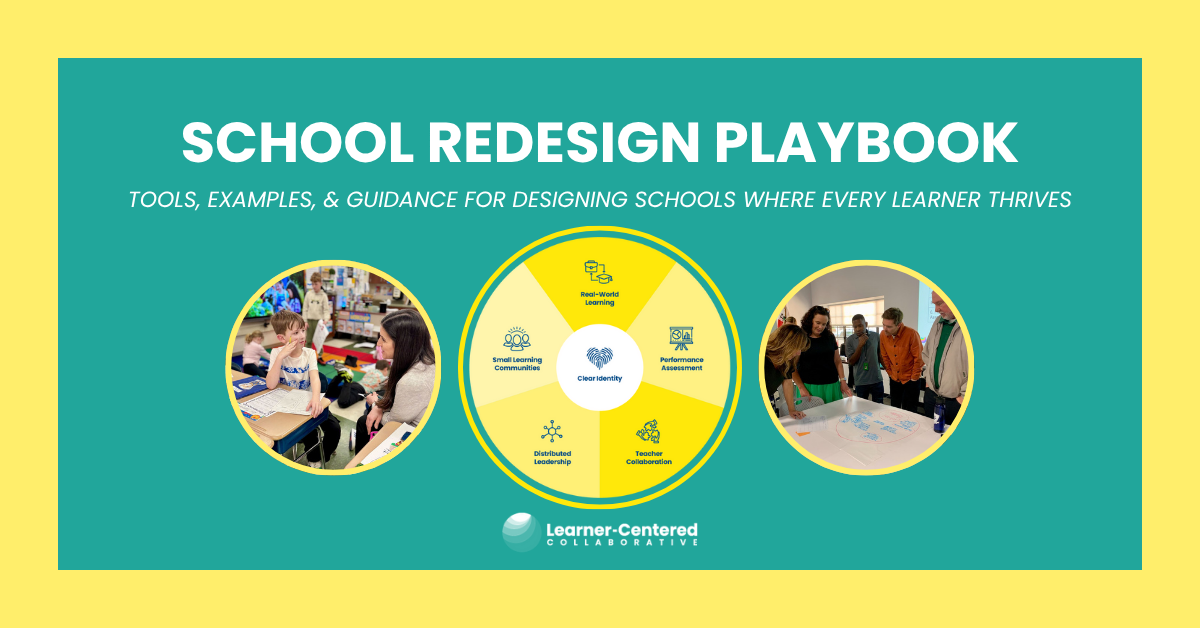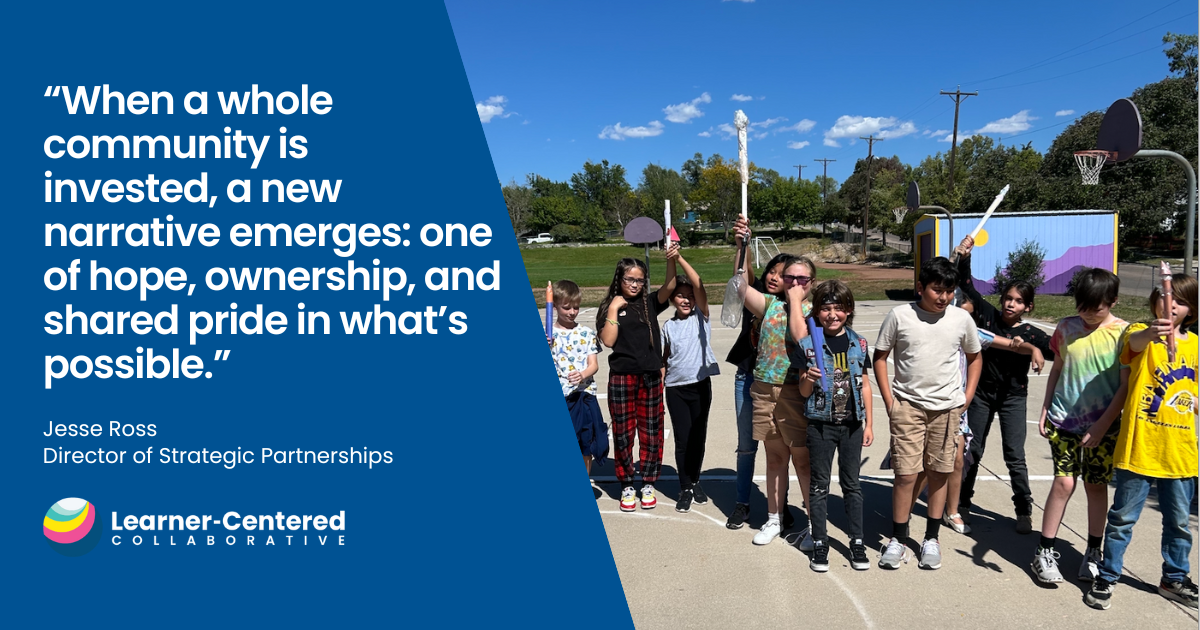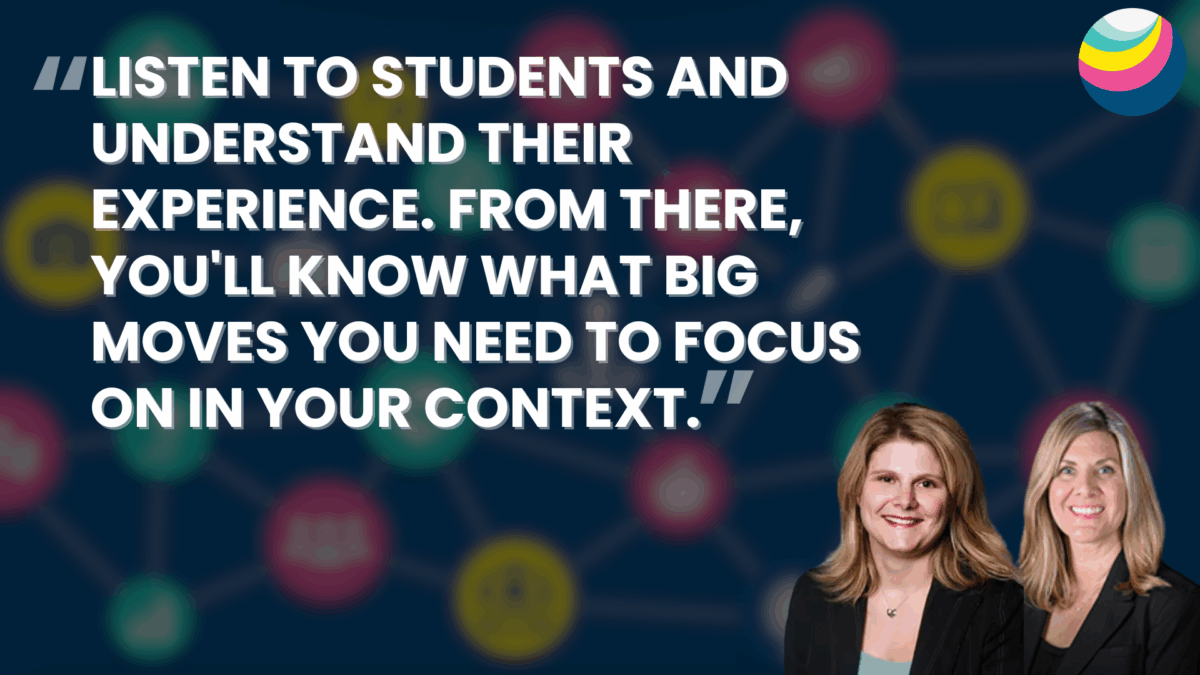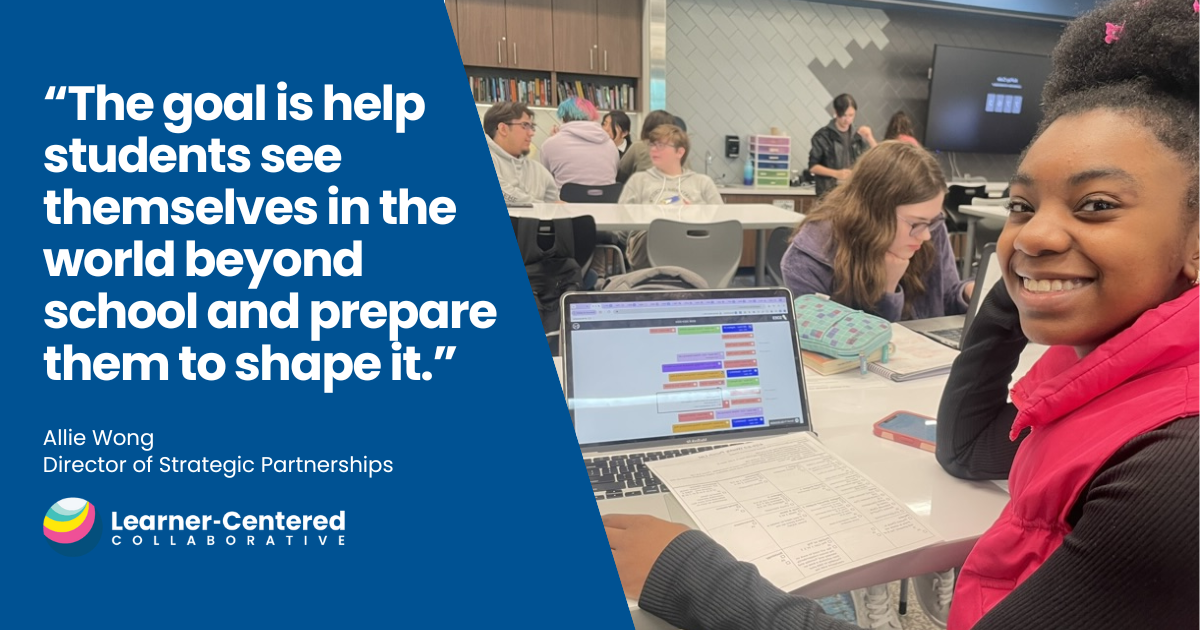How One District is Leading a Bold School (Re)Design Effort

As Escondido Union School District began developing a Blueprint, or a Strategic Plan, to enact the vision they set out in their Framework for the Future, they realized significant work would need to be done at each school site. Specifically, they needed to reimagine what school looks like to focus on the whole-learner outcomes in their Portrait of a Learner (what they call a Learner Profile) and shift learning experiences to be more authentic, personalized, competency-based, and equitable and inclusive.
By 2026, their goal is for all schools to complete a Redesign Action Plan. Starting with four sites in 2023, adding four more in 2024, and an additional cohort in 2025, each site engages in the same process. They form a School Redesign team made up of site leadership and educators representing various grade levels. These teams, along with members of Learner-Centered Collaborative, conduct empathy interviews, go on learning walks, and hold focus groups with families and staff. Each School Redesign cohort meets regularly to unpack their empathy work, get inspiration from other school models, and prototype new ideas for what their school could look like, leveraging Learner-Centered Collaborative’s six School Design Structures.
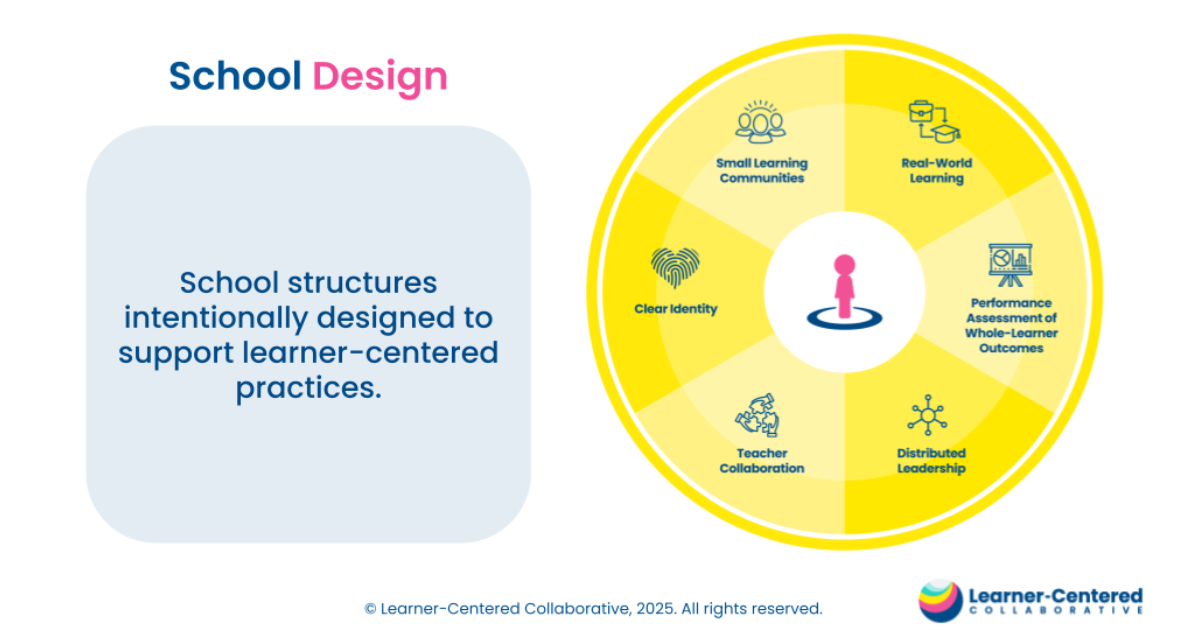
School Redesign at North Broadway Elementary
One of the schools in the first design cohort, North Broadway Elementary, was excited to engage in the redesign process to help reverse declining enrollment. As they went through the redesign process, they centered their identity around their popular outdoor learning spaces—“The Ranch.”
With this clear identity in mind, they defined small learning communities as “Round Ups” where students in multi-grade cohorts would meet with their advisor once a month for one hour, staying with the same advisor and the same “Round Up” from one grade to the next. This creates community and provides older students the opportunity to mentor younger students. Every other Thursday of the month, called “Ranch Days,” provides students with the choice of various exploratory classes. For example, students in first grade might choose music or a dinosaur class.

Overall, in the first year of implementation, North Broadway Elementary has implemented 50 new exploratory classes, increasing student agency and personally relevant learning opportunities. Teachers Gina Matthew and Katie Taylor have noticed a huge difference in student engagement since starting the Ranch model. Students come to school excited about Ranch Day and “no one wants to miss a Thursday anymore.”
Another focus area for North Broadway Elementary was distributed leadership. Teachers across the site belong to one of six different strategic groups ranging from curriculum to maintaining the site’s garden. Each group has a specific leader, increasing the ownership of the school redesign process across all staff, even beyond the initial redesign team.
Each site’s redesign team continues to meet throughout the second year and site leaders from each redesign cohort meet across the district in a community of practice. Within these communities of practice, leaders discuss and work on their implementation plans and think about the next steps they should take toward their broader visions of implementing all six design elements at their sites. Meanwhile, 4 additional sites have kicked off the redesign process thinking about what these 6 design structures will look like in their context.
Read More: Watch Escondido leaders and educators speak about their school design process
School-Within-A-School at Hidden Valley Middle
Another approach to school redesign in Escondido Union School District has been the microschool. Defined here as a school within a school that serves as an innovation lab, this program at Hidden Valley Middle School serves 50% of the 7th grade students at the 6th-8th grade school. Dr. Bryanna Norton wanted to take advantage of starting a microschool to counteract some of the disengagement from students and teachers who she felt needed to have a greater sense of belonging and ownership of the school.
Now, teachers and students involved in this microschool have their own cohorts of advisors who meet for one hour at the beginning of the day and one hour at the end of the day in a wellness class. Although students across the school have advisory, this additional wellness class for the microschool students allows them to dig deeper into their social-emotional program, set and reflect on goals with their advisory, and spend time curating and reflecting on evidence of learning in a portfolio. Teachers are also collaborating on incorporating more interdisciplinary projects into their more traditional content courses.

Similar to the North Broadway School Redesign process, teachers in the microschool came together for empathy work and design sessions anchored on the six School Design structures. In this case, however, prototyping and implementation happen at a faster pace due to the smaller size and scale of the microschool. The microschool teachers share what they are testing and learning in site-wide staff meetings and the goal is to scale these practices throughout the school, starting with 8th grade in 2025-26.
Dr. Norton has noted that the microschool has increased students’ feelings of belonging. Out-of-school suspension is down 60%, attendance is up 10%, and iReady test scores show an improvement in ELA and math performance.
The journey of School Redesign at Escondido Union School District is one of human-centered design. As the district implements their vision, mission, values, Portrait of a Learner, and Learning Model, these sites, along with some of the already existing specialty schools such as Conway Academy, serve as models for a variety of ways to approach learner-centered education.
Learner-Centered Collaborative is supporting School Redesign, Microschool Design and School Design across the country. If you are interested in partnering to reimagine school structures and learning experiences, email us at collaborate@learnercentered.org
